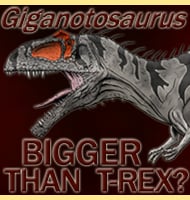Gobititan
In Depth Gobititan is a genus of titanosaurian dinosaur that lived in China during the early Cretaceous. At the time of writing Gobititan is only known from caudal vertebrae and a partial hind limb, though from these it is possible to infer that Gobititan was a primitive titanosaur. This is because Gobititan is known to … Read more
